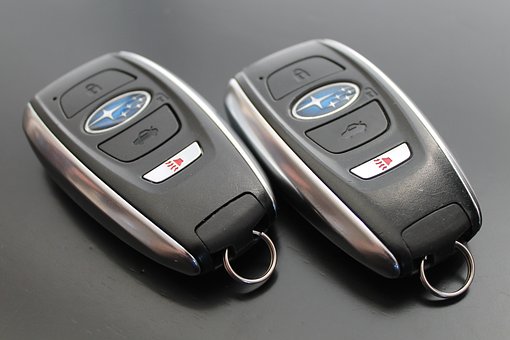A Closer Look At Automotive Tires

They are the only piece of your vehicle that touches the ground
. Your car's tires influence traction, steering response, driver control, and ultimately, the safety of you and your passengers. Like spark plugs and brake pads, however, the treads of your tires wear down over thousands of miles of use. Once they pass a certain point, they need to be replaced.Below, we'll take a detailed look at your car's tires, beginning with their construction. Most people think they are mostly composed of thick rubber; in reality, there is much more beneath the surface. We'll also explore the ratings and grades you should consider when buying a new set for your vehicle. Lastly, you'll learn how to prolong their usable life.
The Construction Of A Typical Tire
First, there is rubber. The rubber is what you see when observing your treads for wear. There are several layers of it to provide sufficient durability and absorption of road shock. In addition to the rubber, there are beads, and a mesh that is designed with rubberized metal cords. The cords provide strength to withstand the weight of your car, occupants, and other load items. The beads ensure the rubber remains connected to the underlying wheel. The cords' ends wrap around them.

The treads of your tires are made with a special rubber material that maximizes traction. Their trenches are designed to allow moisture to pass through. Without them, moisture would create a thin film between the surface of your treads and the ground, causing your vehicle to hydroplane.
When manufacturers make tires, they do so for specific weather conditions. This requires a balance in design since a tire without trenches provides maximum traction on dry road, but presents a safety issue on wet surfaces. For this reason, all-season treads are usually designed with small grooves that provide a degree of traction in both types of conditions.
Ratings And Grades
All treads come with several ratings and grades for such features as traction, speed, temperature, load, and wear. A traction grade ranges from AA to C. It serves as a gauge of a tire's ability to stop on a wet surface. It's worth noting this grade does not reflect cornering ability.
Speed ratings indicate the top speed at which a tire can safely travel. If you drive at a higher speed than noted by this rating over a prolonged period, you will risk a tire failure.
Temperature grades range from A to C. This grade signifies a tire's ability to withstand and dissipate heat. If the tire is exposed to temperatures above that suggested by the grade, the treads will deteriorate.
A load rating typically ranges from 70 to 110. It reflects the highest allowable amount of weight a tire can withstand over an extended period.
Lastly, the tread wear grade indicates how long the treads can be expected to last. It's important to note the grade is applied after the tire is tested on a government track. This track may be a poor reflection of your actual driving circumstances.
Extending The Life Of Your Tires
The two most important details to address are inflation and rotation. Make sure your tires are filled with the appropriate amount of pressure (check your owner's manual for the recommended psi). Check them every two or three weeks. If they are overinflated, you'll notice premature wear in the center of the treads. If they are underinflated, you'll notice wear on the sides.
Periodically rotating your tires helps distribute normal wear evenly across the entire set. If you neglect to do this, one or two will sustain much more wear than the others, and need to be replaced earlier.
You'll eventually need to purchase a replacement set of tires for your car. Before you do, learn to recognize the ratings and grades described earlier. Then, make sure to keep your new set properly inflated, and rotate them every 10,000 miles to prolong their life.
by: Jim Renderson Chef Who Fell Down Unattended Manhole May Make Injury Claim Soaring popularity of automotive window tinting Insurer Refuses To Pay Out To Work Injury Victim Auto Insurance Plan Advantages And Insurance Deductibles Finding Auto Parts In San Diego Cheap San Diego Auto Parts Some Top Tips On Getting Cheap Auto Insurance For Teens So What's The Best Way To Gather Auto Insurance Quotes? What Car Insurance Companies In Australia Provide You With Live Online Insurance Quotes Athletic Injury Safety In Holly Springs Offered By Local Chiropractor What accessories can make your 4x4 trucks remarkable? Does It Really Matter Which Auto Shipping Companies You Choose? Heart Infarction Injuries Recovery With Adult Stem Cells Therapy